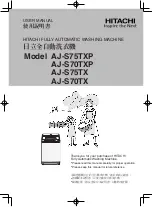
FORM NO. 56043056 ConvertaMAX™ 20/26 / BA 550/650 - 31
RECOVERY SYSTEM
Electrical Diagram
*For complete description of all callouts see Electrical System
Wiring Diagram
.
VACUUM / RECOVERY SYSTEM SERVICE MAINTENANCE CHECKLIST
Whenever there is a vacuum problem, it’s best to check over the entire system. Use the checklist below as a guide, to thoroughly check the vacuum
system.
Clean built-up dirt from the inside of the squeegee tool.
Replace the squeegee blades if they are nicked or torn.
Inspect the hose between the squeegee tool and the recovery tank, rinse any built-up dirt from the hose. Replace the hose if it is kinked
or damaged.
Inspect and make sure the gasket on the recovery tank cover is sealing and not damaged.
Inspect and clean the vacuum motor float cage.
Make sure that the recovery tank drain valve seals airtight.
TROUBLESHOOTING GUIDE
If water flows around the ends of the squeegee tool, instead of being pulled into the tool, the vacuum system is not working properly. When a vacuum
system performs poorly, it is usually because of one of the following problems:
Vacuum Leak(s) – Air flowing into the vacuum system past a bad gasket or leaky hose, damaged tank, or a leaky drain valve. A vacuum leak
below the water line will create turbulence in the recovery tank, causing water to enter the vacuum motor.
Restriction(s) – Anything that blocks the flow of air through the system. Restrictions may also be caused by built-up debris in the squeegee tool,
vacuum hoses, float cage or wherever the airflow is forced to make a sharp turn.
Both leaks and restrictions decrease the quantity of air flowing through the squeegee tool. The air that does go through the squeegee tool moves
slower, so it has less pick-up power.
FIGURE 2
F4
+24V
-24V
RED/GRN
RED
BLK
M
M1
BLU
K2
D1
K2
BLK
RED/WHT
S4
VIO
RED
S5
F1
S1
revised 9/01
















































